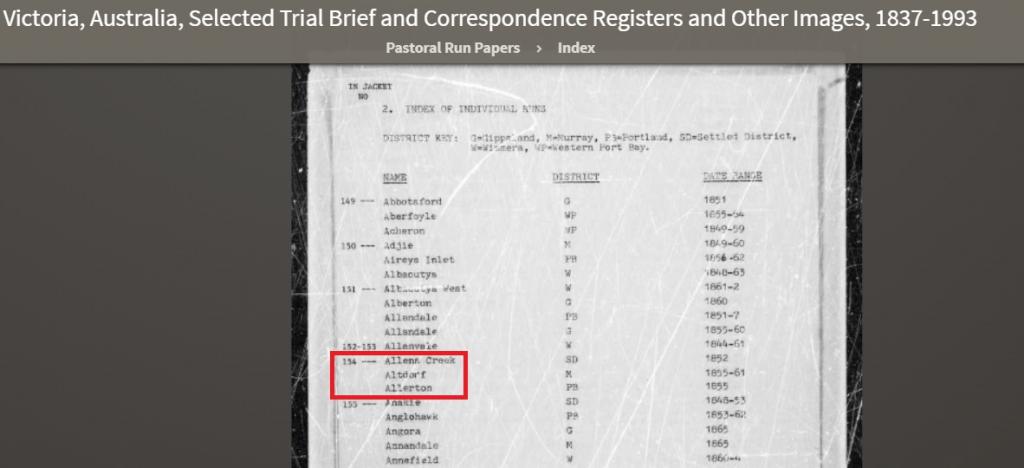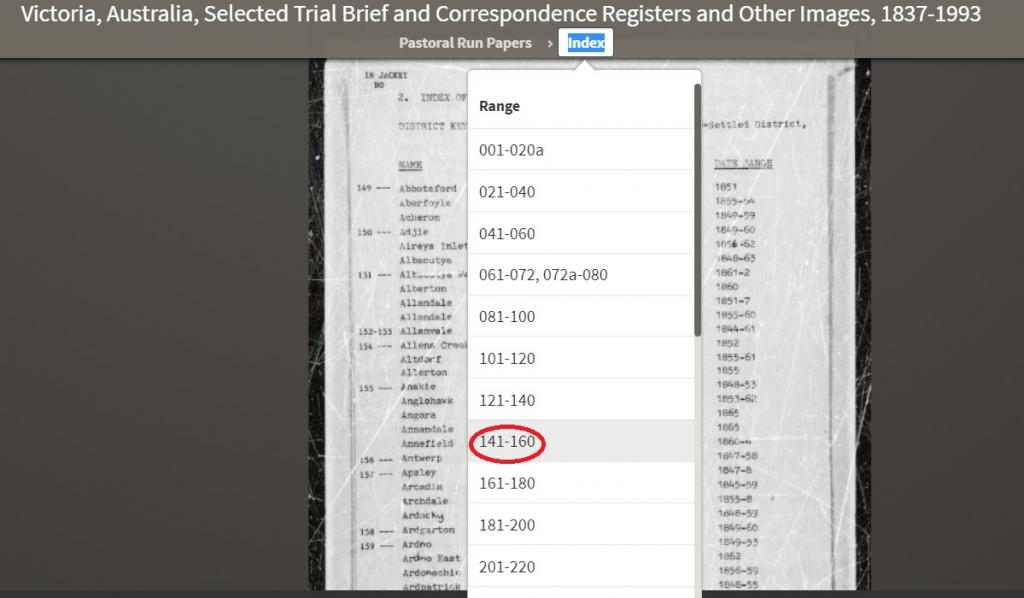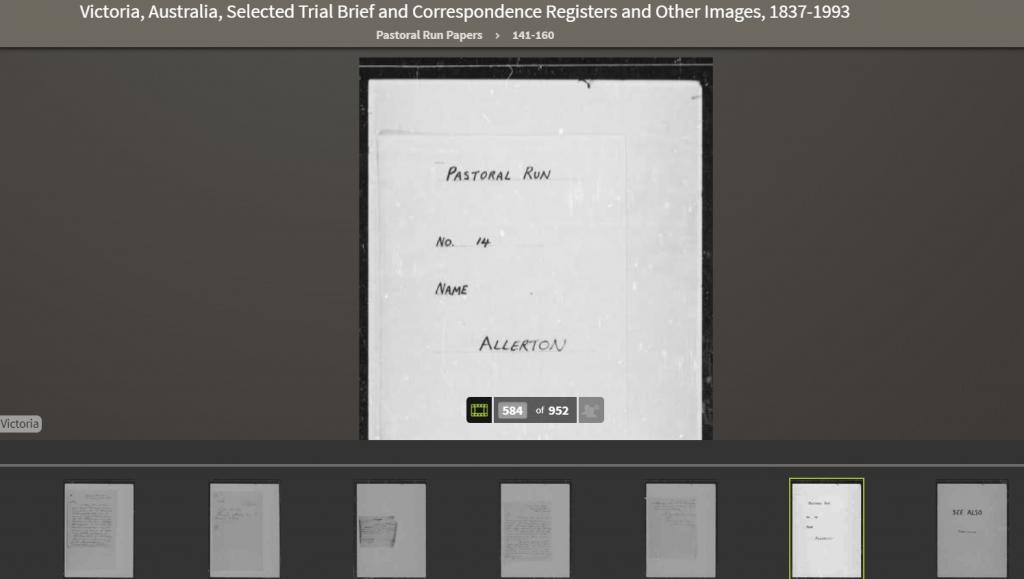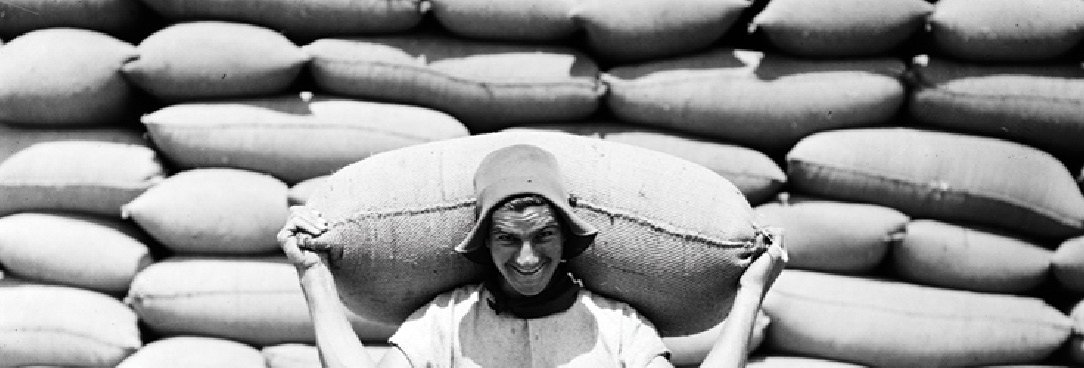Last updated:
What do I need to know?
This guide will show you how to find a digital plan of a Pastoral Run, and a file of papers concerning the Pastoral Run.
How do I search?
Steps 1 to 5 (located under "Useful Links" on this page) lead to a digital image of the plan of the pastoral run (note that the further along in these steps you are able to start, the better). Step 6 leads to digital images of the pastoral run papers.
To begin your search, you just need to know one of the following:
- name of the pastoral run's leaseholder (start at step 1)
- the parish/es in which the run which was located (start at step 2)
- the location of the run (start at step 3)
- the number of the of the pastoral run (start at step 4)
- the name of the of the pastoral run (start at step 5 for a pastoral one plan, or at step 6 for the pastoral run papers)
You may need to use several of these steps, before you proceed to step 6, which will lead you to the pastoral run papers.
About these records
These plans and files relate to pastoral runs – areas of land occupied by early European settlers for grazing, before regulation by state and colonial governments. The runs were eventually subject to a yearly lease payment, and the option to also lease up to 640 acres of adjacent land (for a detailed history, see Historical Records of Victoria, Volume 6.)
Who created these records?
Crown Lands Department VA 2878.
Next Steps
What are in these records?
In Record series number (VPRS) 5359 Pastoral Run Files, the file for each run may include:
- a lease, license or correspondence relating to the run
- a description of the run
- requests for a transfer of a lease or license
- returns of livestock
- complaints made by leaseholders
In Record series number (VPRS) 8168 Pastoral Run Plans, a plan of the run may include:
- its boundaries and dimensions
- topographic or geographic features
- the name of the leaseholder
- the date the plan was drawn
-
To search for Pastoral Run plans - if all you know is the name of the leaseholder, there are two options for finding the name of the run or parish:
- order the two volumes in VPRS 5825 Pastoral Run Registers – these link the names of leaseholders to their pastoral runs
- consult the publication Pastoral Pioneers of Port Phillip (by RV Billis and AS Kenyon), available online
Now that you have the name of the run, to search for Pastoral Run plans, enter the name into the "Pastoral Run Plans search by name or number of run" search box above.
To search for Pastoral Run papers, go to step 6.
To search for Pastoral Run plans - if you know the location of the run, use maps of to find the most likely parish(es) where the run was located. To find a Parish view these PDF maps South East | North East | North West | South West ( Melbourne Parish names are in the south-west map), or look through this list of Parish names which include land districts.
Go to step 3 and use the name of the parish to continue your search.
To search for Pastoral Run plans - if you know the name of the parish which the pastoral run is located in, enter the parish name into the "Pastoral Run Plans search by name or number of run" search box above. You may get more than one result, as there were often several runs in one parish. The search results will also provide you with the numbers of these pastoral runs.
Go to step 4 and use the number of the run to continue your search.
To search for Pastoral Run plans - if you know the number of the pastoral run, enter the number into the "Pastoral Run Plans search by name or number of run" search box above. The search results will also provide you with the name of the pastoral run, which you'll need to find the Pastoral Run papers.
Once you have the name of the run, go to step 6 to find the Pastoral Run papers.
To search for Pastoral Run plans - if you know the name of the pastoral run or the parish it is located in, enter the parish or run name into the "Pastoral Run Plans search by name or number of run" search box above.
To search for Pastoral Run papers, go to step 6.
The Pastoral Run papers have been digitised and are available online via Ancestry.com - READING ROOM ACCESS ONLY to the Pastoral Run Papers here. This link takes you to the first page of the digitised images - read the instructions below to help you navigate to records of interest.
You'll need to know the name of the run before you get started with this step. See steps 1 to 5 for various ways to find out the name of a run of interest. Once you have the name of the run, follow this link to take you to the Pastoral Run papers index page. This is the first of thirty-six pages, listing all of the names of the runs alphabetically (the previous seven pages provide an index to papers which are about pastoral runs in general, rather than any specific run).
Find the name of the run you're interested in, and take note of the "jacket" number beside it. In the example below, the papers for the Allenn Creek, Altdorf and Allerton runs are in jacket 154.

Next, select the set of "jackets" which would contain the number of interest. If you click the "index" button, a list will appear to select from:

Finally, browse through the images until you find the front page of the run you're looking for.
Each front page looks the same, and they can be easily spotted in the "filmstrip" along the bottom of the page when browsing (see below). Note that the number applied to each run in these images is not the same as the run numbers in the previous steps. When browsing, the runs are arranged alphabetically by the name of the run, not by the run number.

Material in the Public Record Office Victoria archival collection contains words and descriptions that reflect attitudes and government policies at different times which may be insensitive and upsetting
Aboriginal and Torres Strait Islander Peoples should be aware the collection and website may contain images, voices and names of deceased persons.
PROV provides advice to researchers wishing to access, publish or re-use records about Aboriginal Peoples
